This is the third post in a series of tests of the Fujifilm GFX 100, Mark II, which was released this week. You can find all the posts in this series by going to the Categories pane in the right hand panel and clicking on “GFX 100 II”.
In the previous two posts, we saw how engineering dynamic range (EDR), a measure of read noise, varied with ISO setting on the GFX 100 II. Now let’s see how it varies with shutter speed. I set the ISO to 1000, and made images at one-third stop shutter speed intervals from 1/4000 second to 60 seconds, using EFCS and 14-bit precision.
Except for the G1 channel, that’s pretty much what I’d expect. But that channel looks weird. I upgraded the camera to Release 1.1 firmware, and made another set of dark-field exposures.
Pretty similar. I wonder what’s going on.
Looking at the raw spectra of the 50 second exposure (file 241) and compare that with the 1/4000 second exposure (file 188):
This presentation doesn[‘t show the absolute amount olf noise, in fact it[‘s normalized to the noise amplitude. It does show how the noise varies with spatial frequency in two directions. I don’t see anything significant here. There’s more noise in file 241 — the 50 second image — and that has the effect of suppressing the tall spike in file 188.
There is an odd periodicity to the horizontal frequency in this plane, which makes me suspicious of in-camera processing.
There’s more lowpass filtering in the 50-second image.
Again we have the horizontal periodicity.
Sometimes numbers just don’t do it; you have to take a look. Here are the 1/4000 second and the 60 second images developed in Adobe Camera Raw with default settings except exposure +5, contrast +100, shadows +100, and blacks +100.
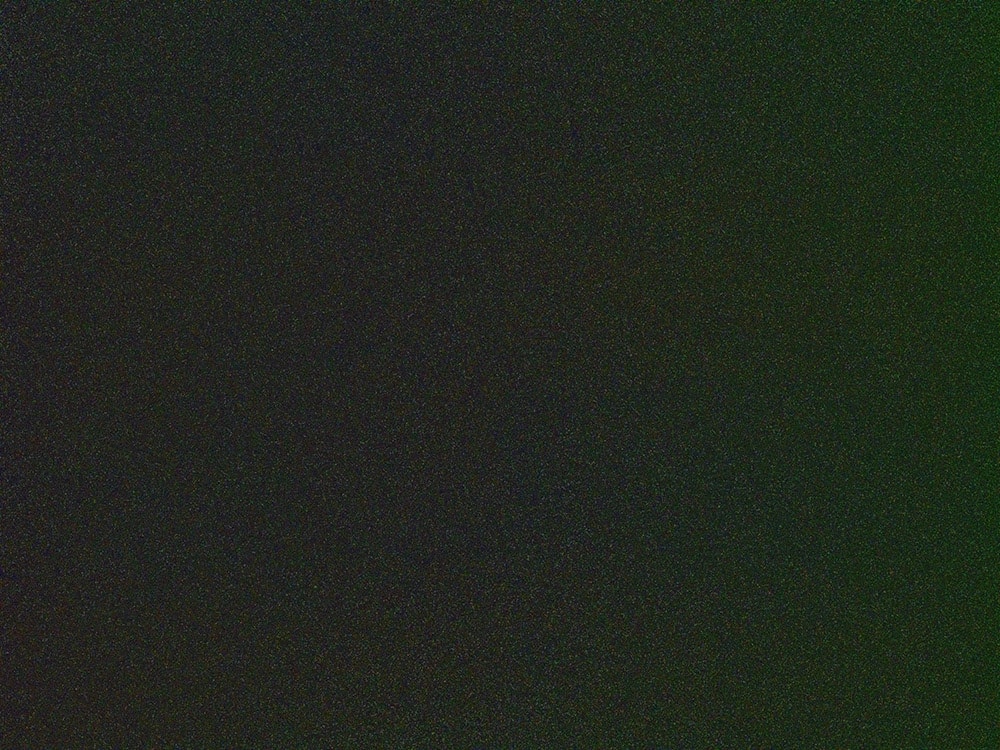
There is a green tinge to the right hand side of the image.
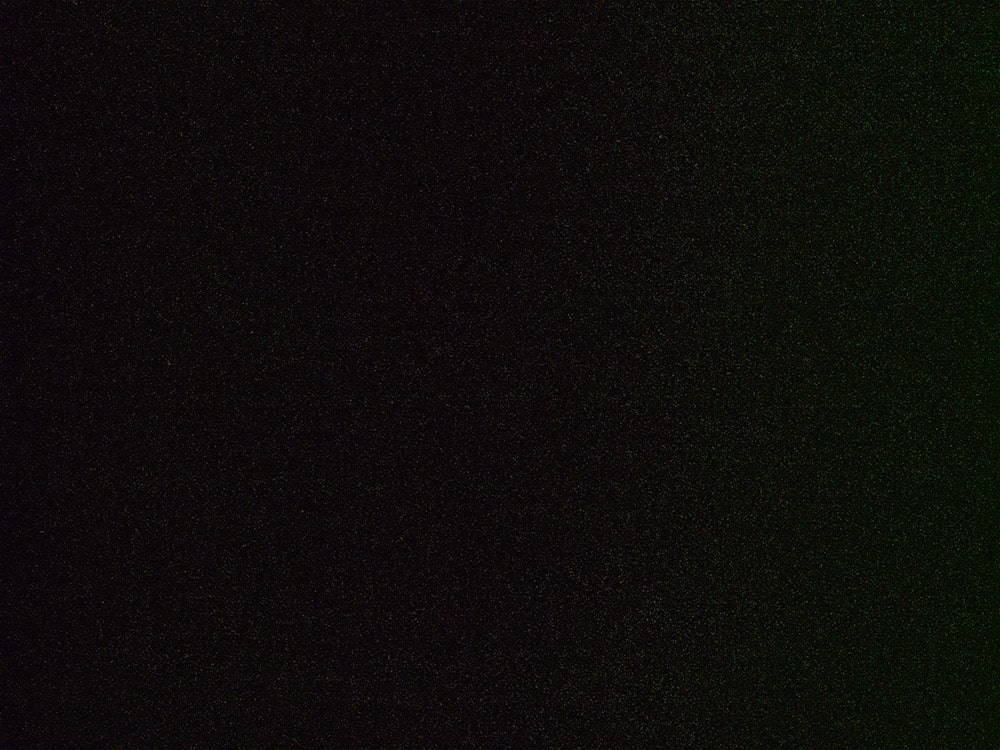
There’s a little green, but a whole lot less.
Is this a sample issue? I’ll try to find out.
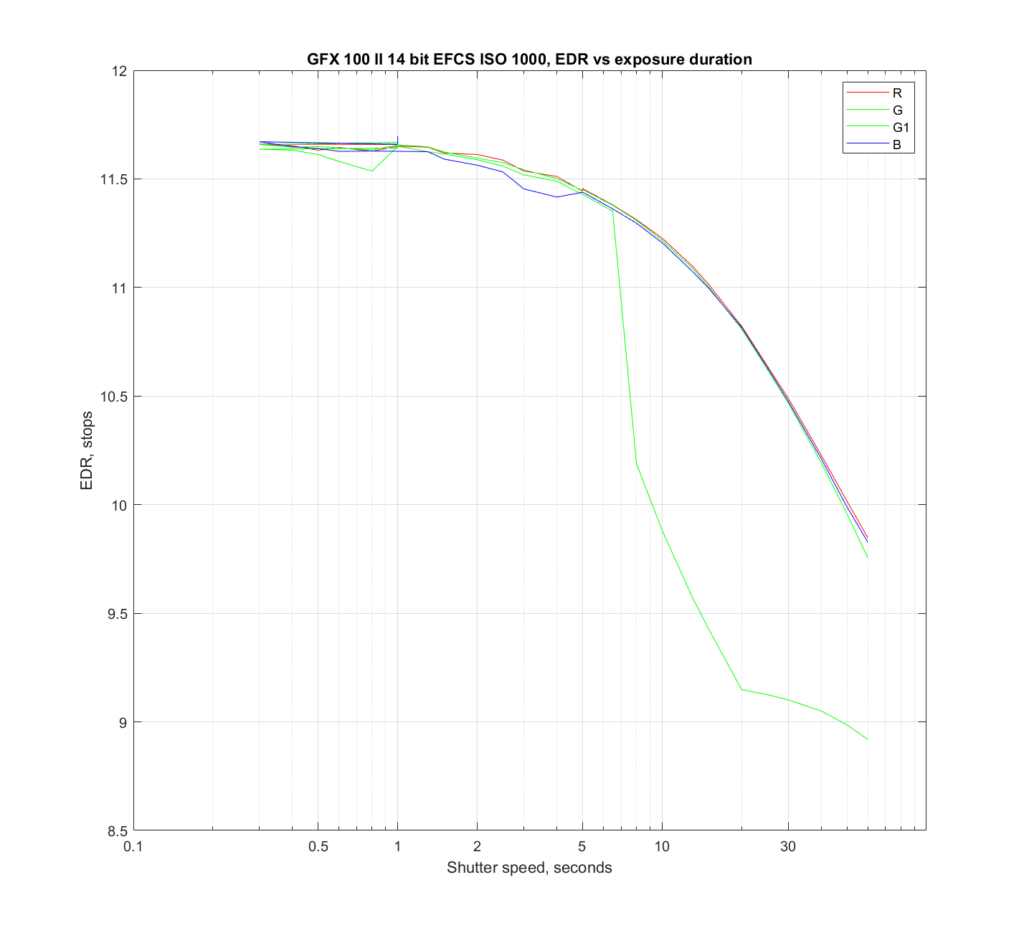
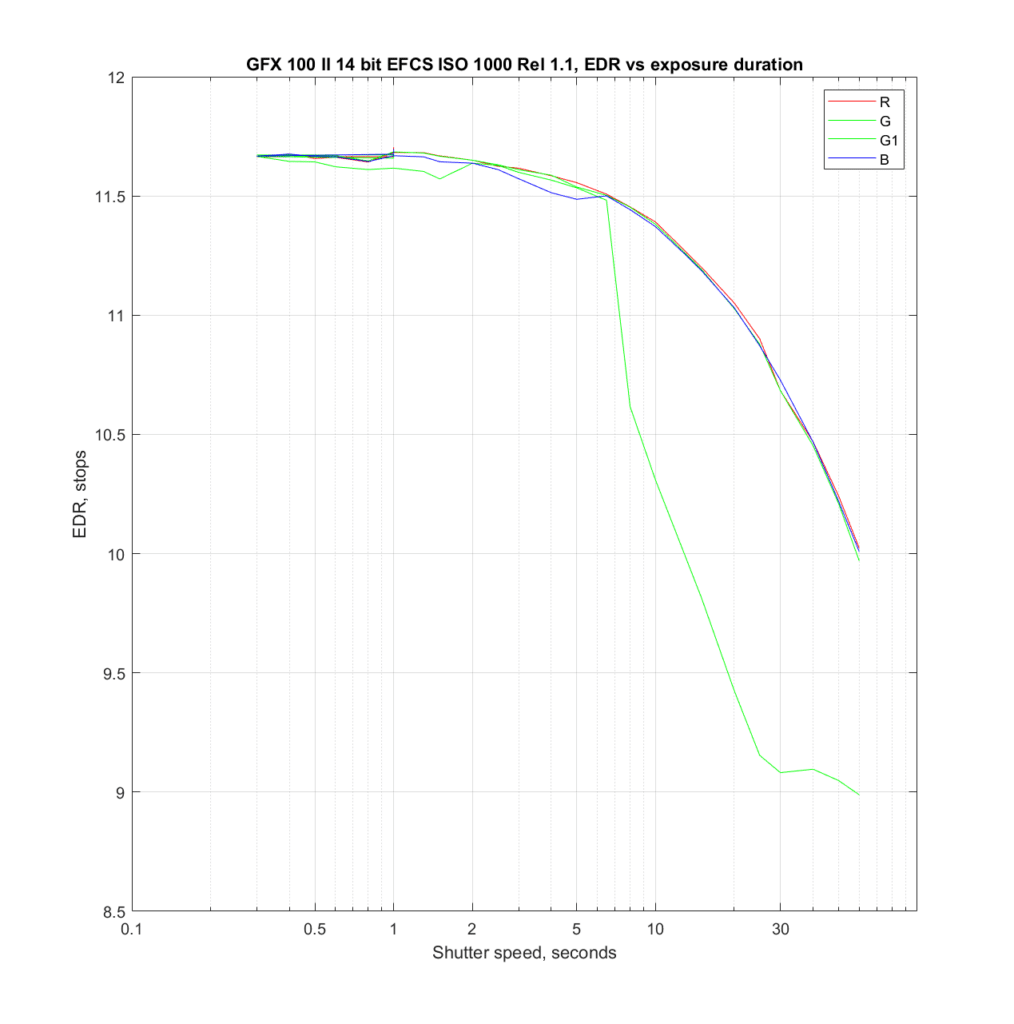
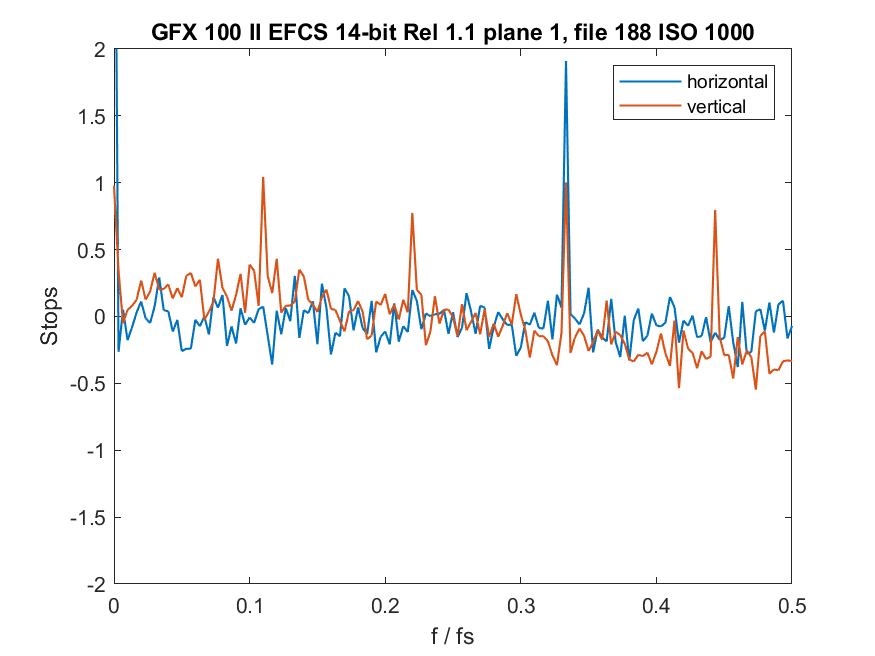
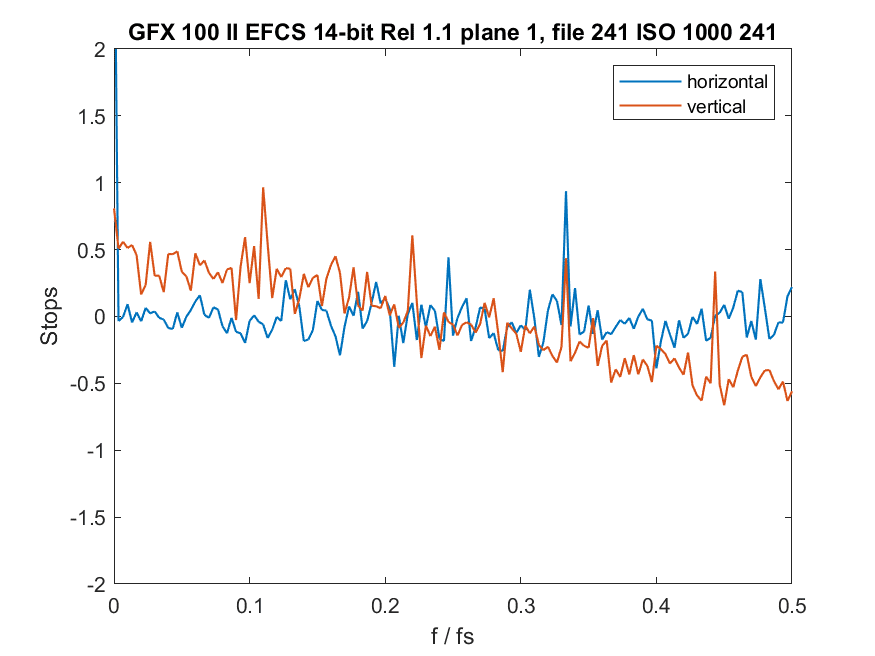
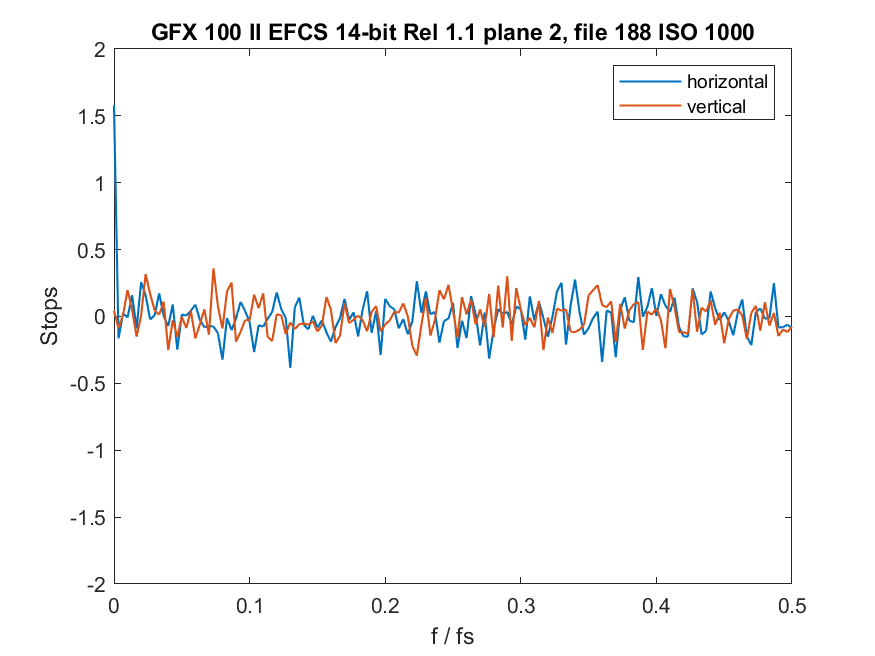
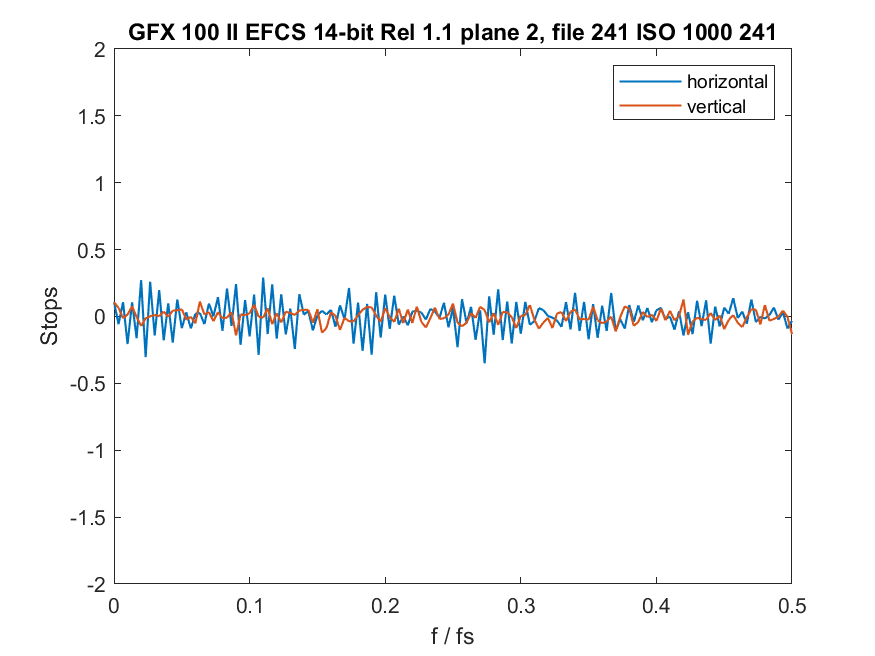
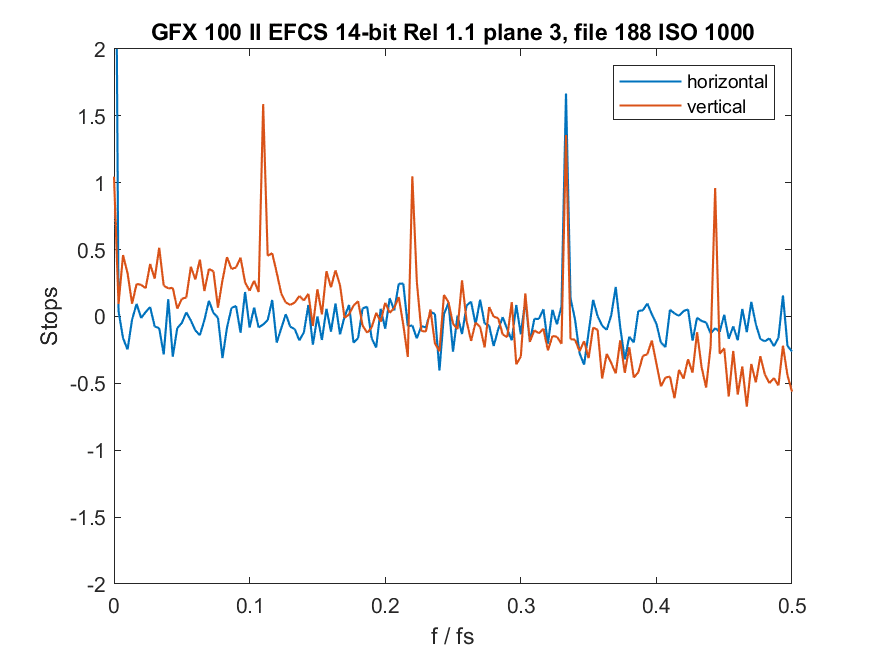
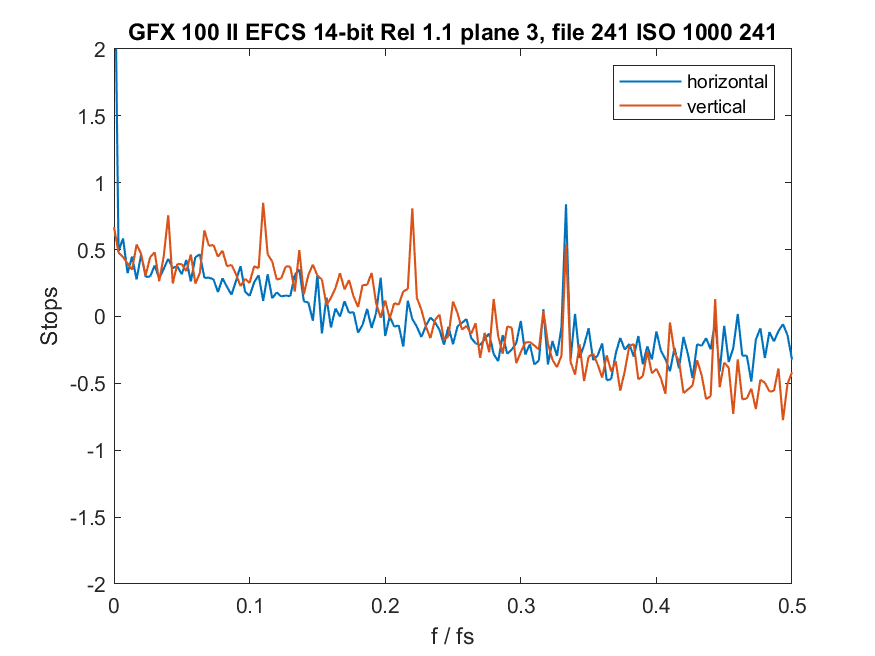
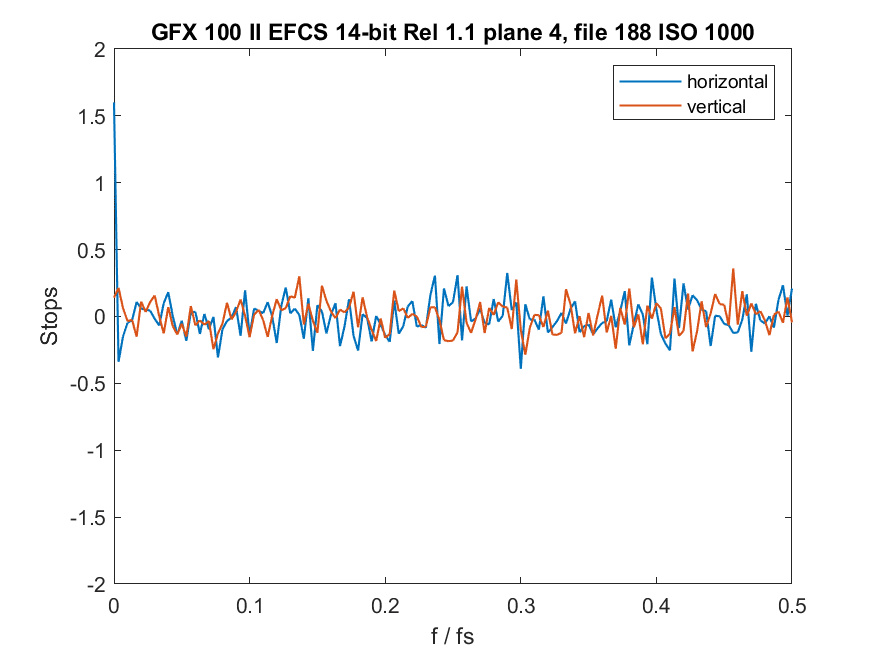
Leave a Reply